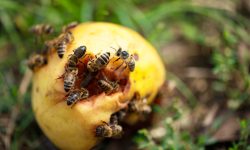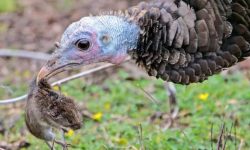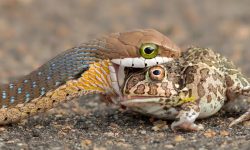The praying mantis is one of nature’s most fascinating and efficient predators. Known for its prayer-like stance and lightning-fast hunting reflexes, this insect embodies both grace and power. But what exactly does a praying mantis eat to stay so sharp, strong, and deadly?
The answer might surprise you. Unlike many other insects, the praying mantis is strictly carnivorous. It feeds on live prey — anything it can catch and overpower. From flies and crickets to small reptiles and even hummingbirds, the mantis is a fearless hunter with an appetite that matches its skill.
In this detailed guide, we’ll explore 20 foods praying mantises love the most, uncover their unique hunting behavior, and explain how their diet changes throughout their life cycle.
Understanding the Praying Mantis Diet

The Praying Mantis: A Carnivorous Insect
All praying mantis species are meat-eaters. They survive entirely on other animals — never plants. Their diet consists mainly of insects, but large mantises can also consume small vertebrates.
Using their raptorial forelegs, which fold like a switchblade, they grab and immobilize their prey with incredible precision. Once caught, the mantis begins feeding immediately, often while the prey is still alive.
This efficient hunting method makes the mantis one of the top insect predators in nature.
How Do Praying Mantises Hunt?
Praying mantises are ambush predators. They rely on stealth, patience, and lightning reflexes to catch food. Their excellent vision — they can see movement up to 60 feet away — allows them to track and time their attacks perfectly.
When prey moves within reach, the mantis strikes in less than 1/20th of a second, grabbing it with its spiny forelegs. The sharp spikes prevent the victim from escaping, and the mantis then eats it head-first to stop any struggle.
When Do Mantises Eat?
Mantises are mostly diurnal feeders, meaning they hunt during the day when insects are active. However, some species also feed at night under artificial lights where moths and other flying insects gather.
Because mantises don’t store fat, they must eat regularly to maintain their strength, especially during mating and egg-laying seasons.
20 Foods Praying Mantises Love the Most
1. Flies
Flies are among the most common foods for praying mantises. They’re easy to catch, highly nutritious, and abundant.
Mantises use their quick reflexes to grab flies mid-air or from nearby surfaces. Flies provide protein and fat, fueling the mantis’s hunting energy.
Baby mantises (nymphs) often rely on fruit flies as their first meals due to their small size and availability.
2. Crickets
Crickets are a favorite prey for both wild and captive mantises. They’re high in protein and promote healthy growth.
Mantises typically stalk crickets slowly before striking. Once caught, the cricket is consumed head-first to prevent it from fighting back.
For pet mantises, gut-loaded crickets (fed with vegetables) are an excellent and safe diet option.
3. Grasshoppers
Grasshoppers provide an excellent source of protein and moisture. In the wild, mantises commonly ambush grasshoppers resting on leaves.
Their slow, deliberate movements allow them to blend into the background before launching an explosive attack.
Grasshoppers are large enough to sustain adult mantises for hours, making them one of their most satisfying meals.
4. Moths
Moths are easy prey for nocturnal mantises. Drawn to light, they flutter close to where mantises wait patiently.
Moths provide a soft, meaty meal full of nutrients. Their gentle movement also makes them easier to catch than faster insects like flies.
In captivity, mantises enjoy small moths as occasional treats to vary their diet.
5. Butterflies
While beautiful to humans, butterflies are just another meal to a mantis. Their bright colors and slow flight make them easy targets.
Mantises often grab butterflies mid-air, consuming their bodies and wings in a single sitting.
Butterflies provide both energy and hydration through their soft tissues.
6. Beetles
Beetles are a challenging but rewarding meal. Their hard shells require more effort to chew, but their protein content makes them worth it.
Smaller beetles and larvae are preferred over large, heavily armored species. Mantises use their spiny arms to crush and hold the beetle while feeding.
Some species even specialize in catching beetles found in trees and shrubs.
7. Caterpillars
Caterpillars are a soft and nutrient-rich food for mantises. They’re easy to catch and provide moisture and protein.
Mantises enjoy them because they don’t fight back and are slow-moving. However, some caterpillars have toxic hairs or chemicals, which mantises instinctively avoid.
This prey is especially common in gardens and leafy areas.
8. Spiders
Mantises often eat spiders, including web-building and ground-dwelling species.
They approach slowly to avoid detection, then strike with lightning speed before the spider can react. Spiders provide dense nutrition, supporting mantis muscle and exoskeleton strength.
Interestingly, the relationship is mutual — large spiders sometimes eat mantises too, depending on who strikes first.
9. Ants
Ants are eaten mostly by young mantises. They’re small, easy to find, and often appear in groups.
While ants are not very filling for adult mantises, they provide good practice for developing hunting skills.
Mantises typically target individual ants rather than entire colonies to avoid being overwhelmed.
10. Wasps and Bees
Surprisingly, praying mantises can capture and eat wasps and bees. They are immune to stings once the prey is immobilized.
They grab the insect by the thorax to prevent it from stinging, then consume the head and abdomen first.
These prey provide excellent protein, though mantises risk injury if they miss the initial strike.
11. Dragonflies
Dragonflies are fast and agile, but mantises are faster when ambushing. Mantises catch them either mid-flight or when resting near water.
Dragonflies provide a high-energy meal due to their muscular bodies. Their wings are often discarded before the mantis eats the rest.
This prey is common in wetland habitats where both species coexist.
12. Mosquitoes
Small mantises and nymphs frequently feed on mosquitoes. They capture them mid-air or off leaves.
Mosquitoes are easy to digest and provide hydration through their fluid-filled bodies.
By eating mosquitoes, mantises help naturally reduce populations of these pesky insects.
13. Aphids
Aphids are tiny but numerous, making them perfect for young mantises. They live in clusters on leaves, allowing mantises to eat several at once.
Aphids are rich in plant-based nutrients because they feed on sap, giving mantises an indirect boost of vitamins.
This makes mantises beneficial to gardeners as natural pest controllers.
14. Termites
In tropical areas, mantises often prey on termites, especially during their swarming season.
Flying termites are easy targets due to their soft bodies and predictable flight patterns.
Termites are protein-dense and help mantises maintain energy during breeding seasons.
15. Small Frogs
Large mantis species, such as the Chinese mantis or African giant mantis, sometimes catch and eat small frogs.
They grab the frog with their spiny arms, immobilize it, and consume it slowly.
Although unusual, this behavior demonstrates the mantis’s ability to adapt its diet beyond insects.
16. Lizards
Some large mantises prey on tiny lizards like geckos or skinks. They ambush them from vegetation and attack when the lizard moves within range.
These rare meals are extremely high in protein and fat, helping mantises survive in regions with fewer insects.
This surprising diet showcases just how fearless and versatile the mantis truly is.
17. Small Birds
In rare but documented cases, large mantises have been observed catching small birds — especially hummingbirds.
They wait near bird feeders or flowers, snatching the bird in mid-hover. The mantis then feeds on the bird’s neck and chest tissues.
Though shocking, this demonstrates their status as apex insect predators in their size class.
18. Worms
Earthworms and larvae (maggots) are easy meals for mantises, especially during rainy seasons.
Worms are high in protein and water, providing hydration and nourishment simultaneously.
Mantises often eat worms found crawling on the soil surface or leaves.
19. Other Mantises
Cannibalism is common among praying mantises, especially during mating or times of food scarcity.
Females are notorious for eating males after or even during mating, gaining valuable nutrients for egg production.
Younger mantises may also eat their siblings if food is limited, ensuring only the strongest survive.
20. Mealworms and Artificial Feeder Insects
For captive mantises, mealworms, waxworms, and roaches are excellent substitutes for wild prey.
These feeder insects provide balanced nutrition and are readily available in pet stores.
However, it’s important to feed live prey — mantises only recognize moving food. Dead insects are usually ignored.
Why Mantises Are Important in Nature
Natural Pest Control
Praying mantises are essential for maintaining ecological balance. By eating pests like aphids, caterpillars, and flies, they help protect crops and gardens naturally.
Farmers often welcome mantises as allies in organic pest control since they reduce the need for pesticides.
A Role in the Food Chain
While mantises are skilled predators, they are also prey for birds, bats, and frogs. Their diet and feeding habits create vital links between insect and vertebrate food webs.
Adaptability and Survival
Mantises adapt to nearly every habitat — from grasslands to forests and gardens — because of their varied diet. Their ability to eat whatever is available ensures their survival worldwide.
Frequently Asked Questions (FAQs)
Do praying mantises eat plants?
No. Praying mantises are strictly carnivorous and eat only other animals, usually live insects or small vertebrates.
How often do mantises eat?
Adult mantises eat every 2–3 days, while younger nymphs may eat daily due to their fast metabolism.
Do praying mantises eat dead insects?
No. Mantises prefer live prey that moves, triggering their hunting reflex. They rarely eat dead or still food.
Can a praying mantis bite humans?
Mantises can bite if threatened, but their bite is harmless. They cannot pierce human skin easily and do not have venom.
What do baby praying mantises eat?
Nymphs eat tiny insects such as fruit flies, aphids, and small mosquitoes until they grow large enough to catch bigger prey.
Conclusion
Praying mantises are extraordinary hunters — precise, patient, and powerful. From small flies and crickets to frogs and even hummingbirds, their carnivorous diet reflects their status as one of nature’s most formidable insect predators.
Their presence in gardens and ecosystems helps maintain balance, controlling pest populations naturally and effectively.
So, the next time you see a mantis sitting still with folded arms, remember — it’s not praying. It’s waiting, calculating, and preparing for its next meal.






